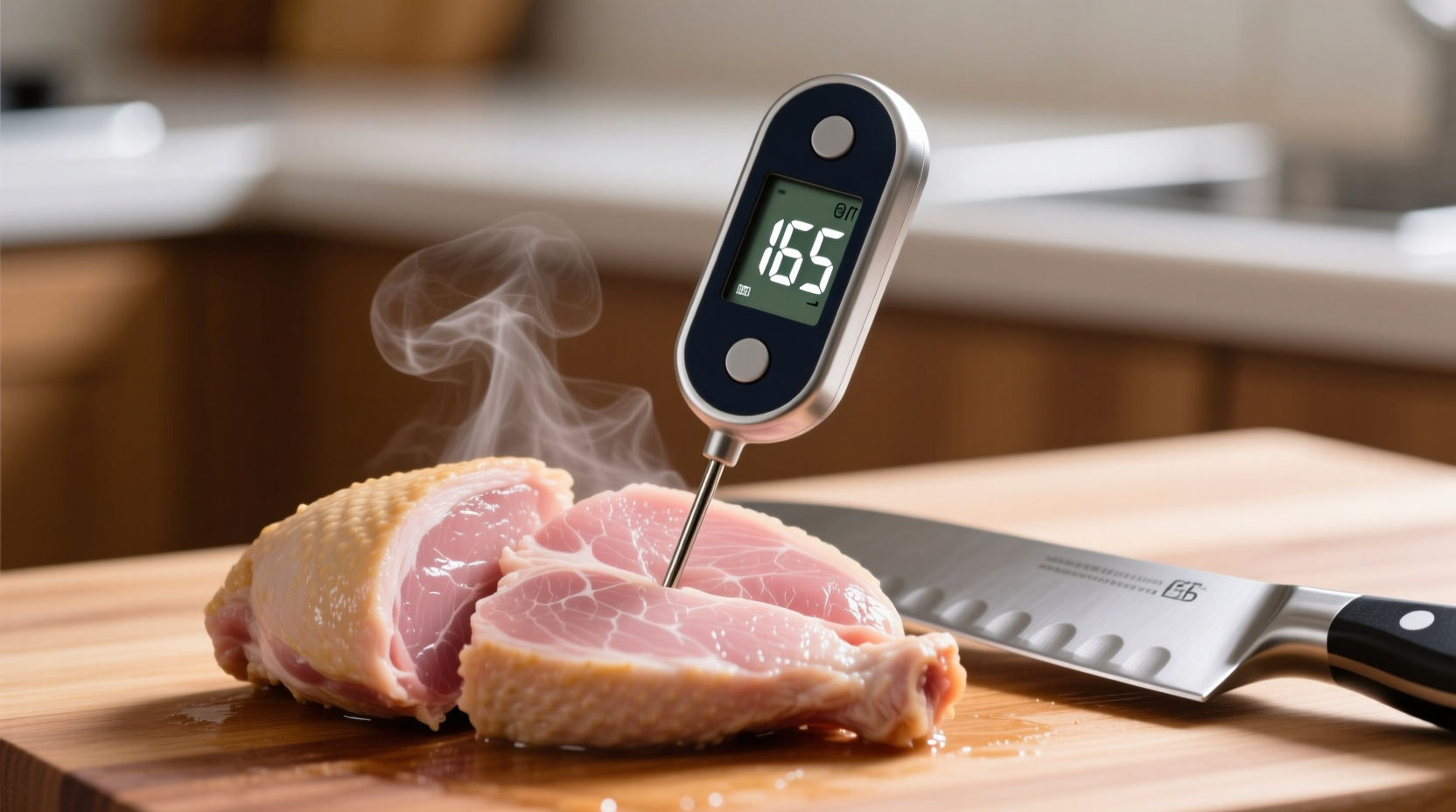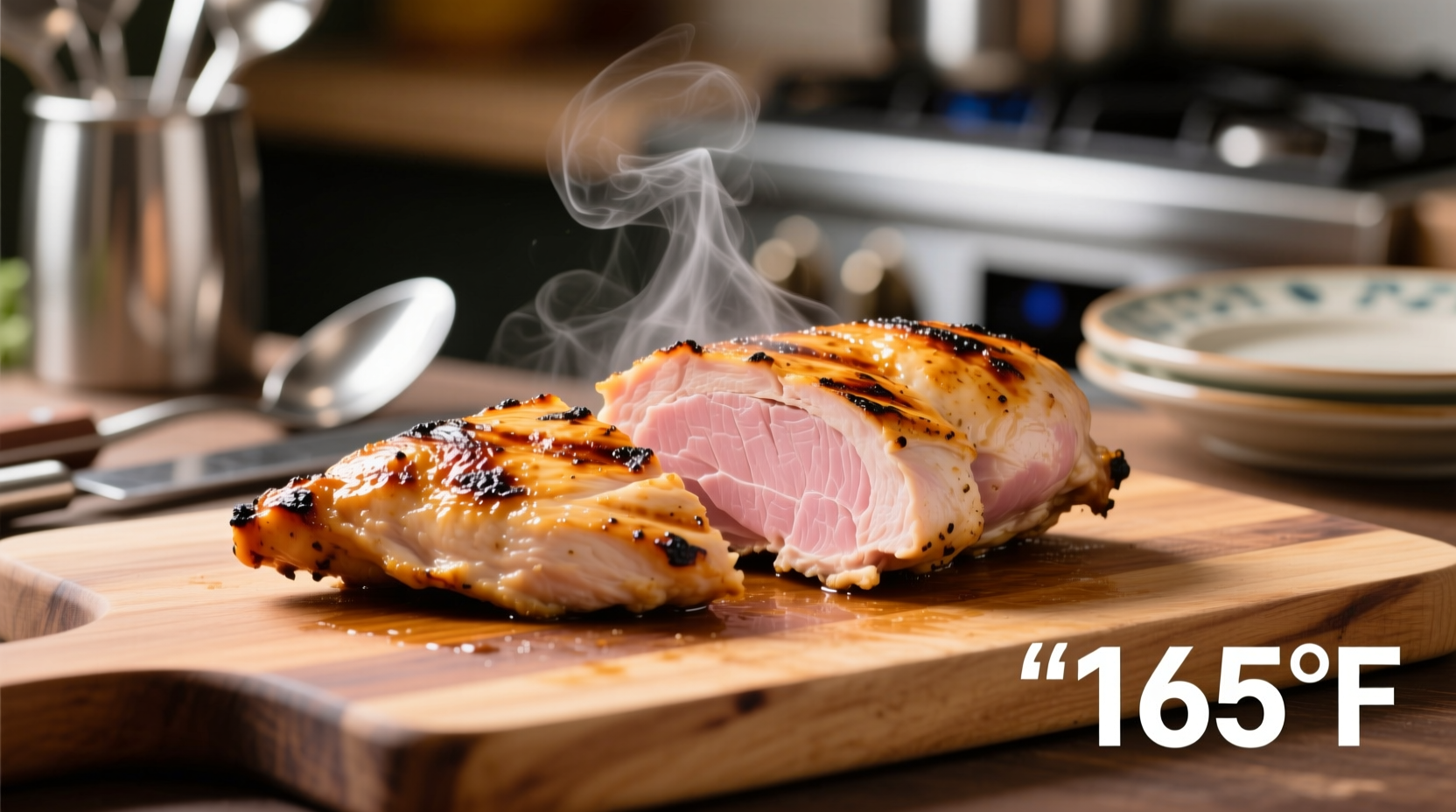Getting chicken breast temperature right isn't just about avoiding foodborne illness—it's the key to perfectly cooked, tender poultry that's neither rubbery nor risky. Many home cooks rely on visual cues like color or texture, but these methods are dangerously unreliable. Let's explore exactly how to cook chicken breast to perfection while keeping your kitchen safe.
Why Temperature Matters More Than Color
Contrary to popular belief, chicken's color doesn't indicate doneness. The USDA's Food Safety and Inspection Service confirms that poultry can appear pink even when safely cooked to 165°F, while seemingly white chicken might still harbor harmful bacteria like Salmonella or Campylobacter. These pathogens are only eliminated at specific temperature thresholds, making precise measurement non-negotiable for food safety.
The Science Behind the 165°F Standard
The USDA's recommendation of 165°F isn't arbitrary—it's based on pathogen destruction kinetics. At this temperature, harmful bacteria are eliminated instantly. Lower temperatures require holding times to achieve the same safety:
| Temperature | Required Holding Time | Practical Application |
|---|---|---|
| 165°F (73.9°C) | Instant | Standard USDA recommendation for immediate safety |
| 150°F (65.6°C) | 2.8 minutes | Used by some chefs with precise timing and resting |
| 145°F (62.8°C) | 9.2 minutes | Rarely practical for home cooking |
This data comes from the FDA Food Code Appendix A, which details the time-temperature relationships required for pathogen reduction. While professional kitchens might use lower temperatures with strict timing protocols, the USDA maintains 165°F as the standard for home cooks because it eliminates timing variables and ensures consistent safety.
How to Measure Chicken Temperature Correctly
Even with the right target temperature, improper measurement leads to undercooked or dry chicken. Follow these steps for accuracy:
- Choose the right thermometer: Digital instant-read thermometers (like ThermoWorks models tested by America's Test Kitchen) provide the most reliable results
- Insert properly: Place the probe into the thickest part of the breast, avoiding bone or fat pockets
- Check multiple spots: Especially with unevenly shaped breasts, take readings from several areas
- Verify before resting: Check temperature just before removing from heat—carryover cooking will raise it 5-10°F during resting
According to research from the University of Minnesota Extension, nearly 40% of home cooks use thermometers incorrectly, leading to either unsafe temperatures or overcooked meat. Proper technique makes all the difference.

Avoiding Common Temperature Mistakes
These frequent errors compromise both safety and quality:
- Guessing instead of measuring: Visual cues fail 25% of the time according to USDA testing
- Not calibrating thermometers: Test in ice water (should read 32°F) or boiling water (212°F at sea level)
- Removing too early: Chicken continues cooking while resting—pull at 160-162°F for final 165°F
- Cross-contamination: Never reuse the same thermometer probe without cleaning between checks
Cooking Method Considerations
Different cooking techniques affect temperature management:
- Pan-searing: Achieve even cooking by pounding breasts to uniform thickness (½-¾ inch)
- Oven roasting: Use a probe thermometer with alarm to monitor without opening oven
- Grilling: Create two-zone fire—sear over direct heat, finish over indirect to prevent burning
- Poaching: Maintain water at 160-170°F for gentle cooking without toughening
The FDA's Food Code specifies that poultry must reach required temperatures regardless of cooking method. However, gentler methods like sous vide allow precise temperature control at lower thresholds with extended timing, as long as safety parameters are met.
Resting: The Critical Final Step
After reaching 160-162°F, remove chicken from heat and rest for 5-10 minutes. During this time:
- Temperature rises 5-10°F due to carryover cooking
- Juices redistribute throughout the meat
- Proteins relax, improving tenderness
Resting on a wire rack (not a plate) prevents steaming and maintains crisp exterior texture. This simple step transforms potentially dry chicken into juicy, restaurant-quality results.
When to Trust Lower Temperatures
While 165°F remains the USDA standard, some professional chefs use lower temperatures with precise timing. According to the FDA Food Code Appendix A, holding chicken at 150°F for 2.8 minutes achieves the same pathogen reduction as instant kill at 165°F. However, this requires:
- Accurate thermometer monitoring
- Strict timing protocols
- Understanding that this isn't recommended for vulnerable populations
For most home cooks, especially when serving children, elderly, or immunocompromised individuals, sticking with the 165°F standard provides the safest, most reliable results without complicated timing requirements.
Food Safety Resources
For the most current guidelines, consult these authoritative sources:











 浙公网安备
33010002000092号
浙公网安备
33010002000092号 浙B2-20120091-4
浙B2-20120091-4